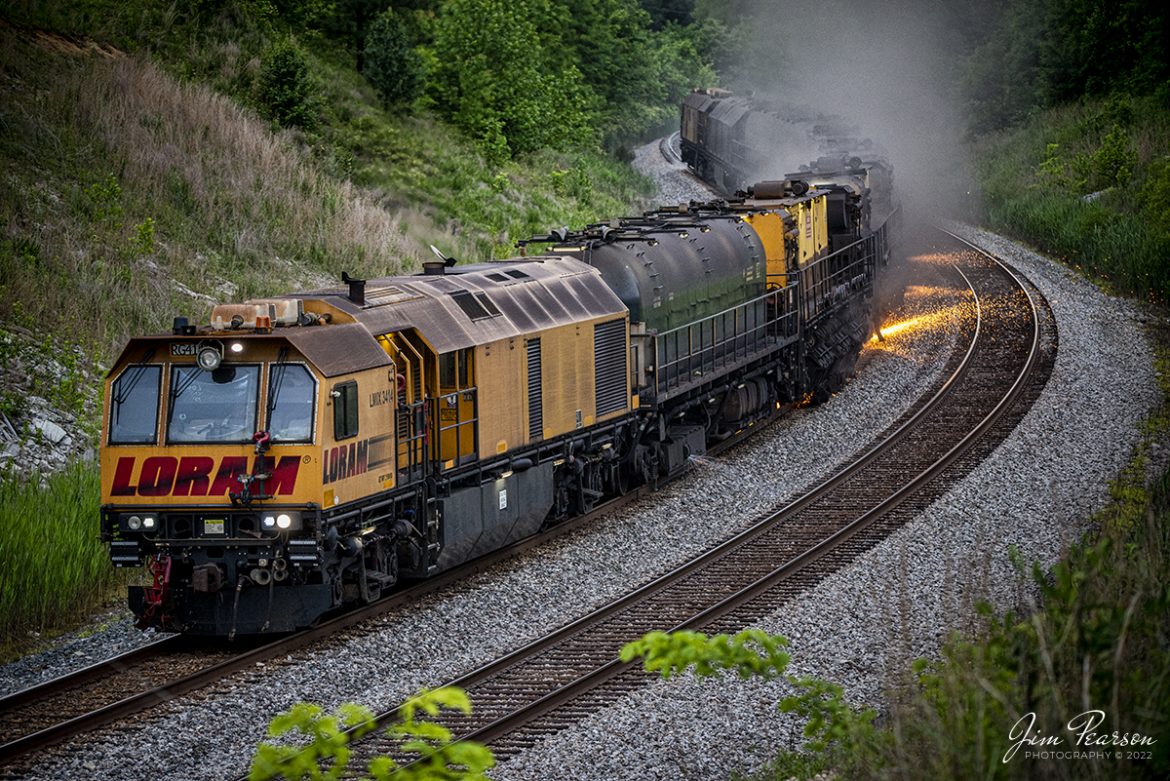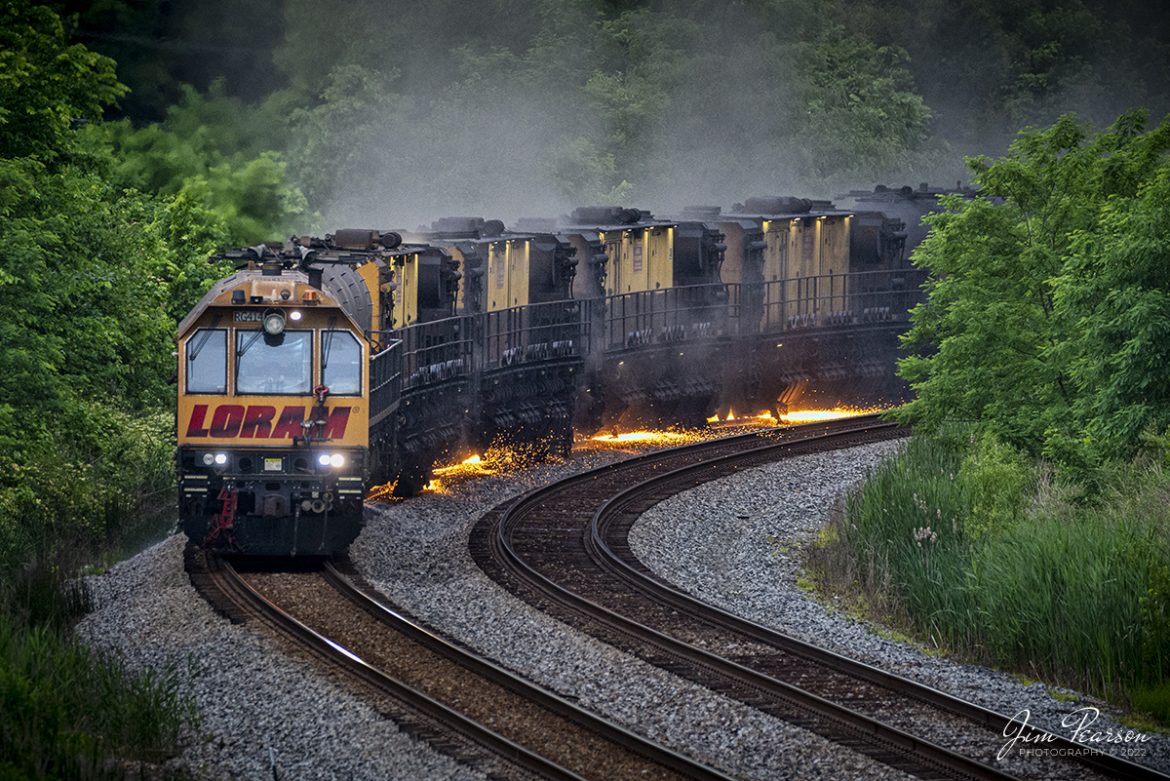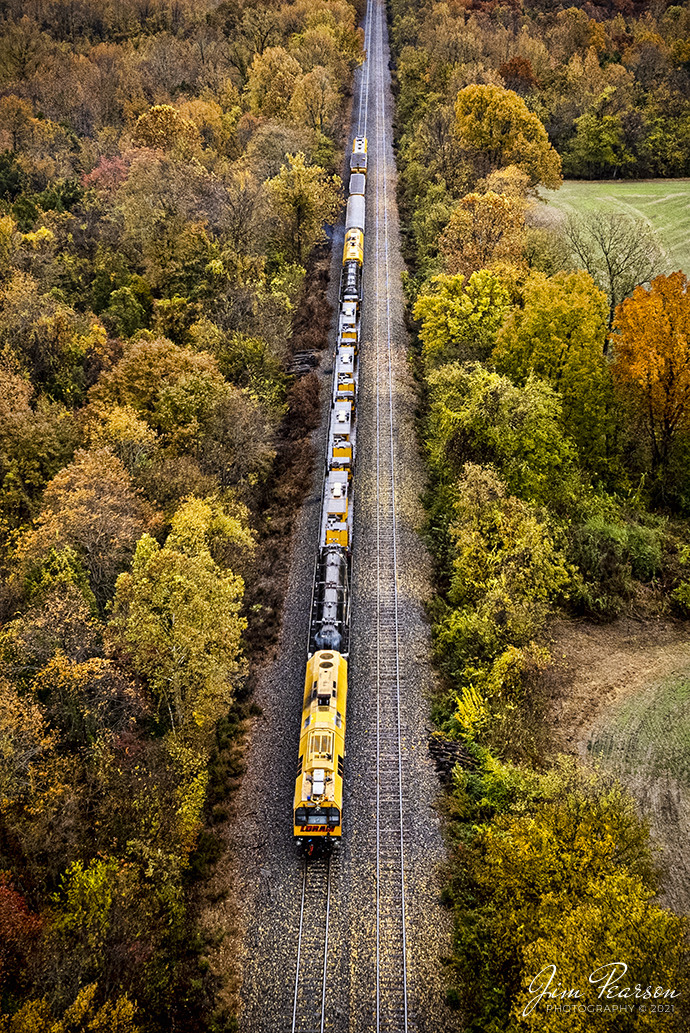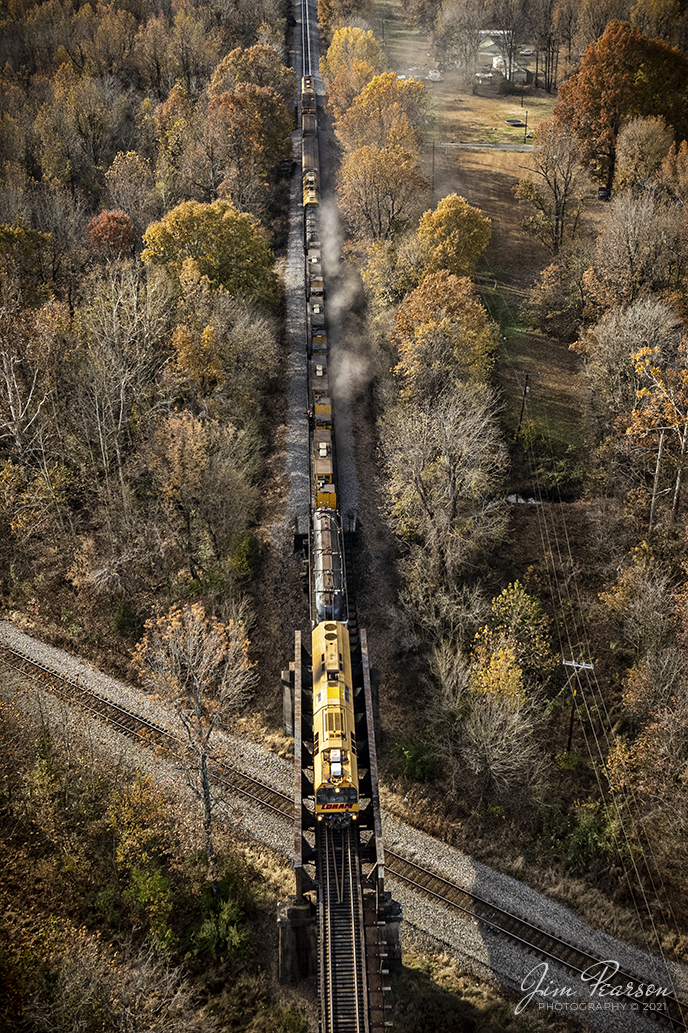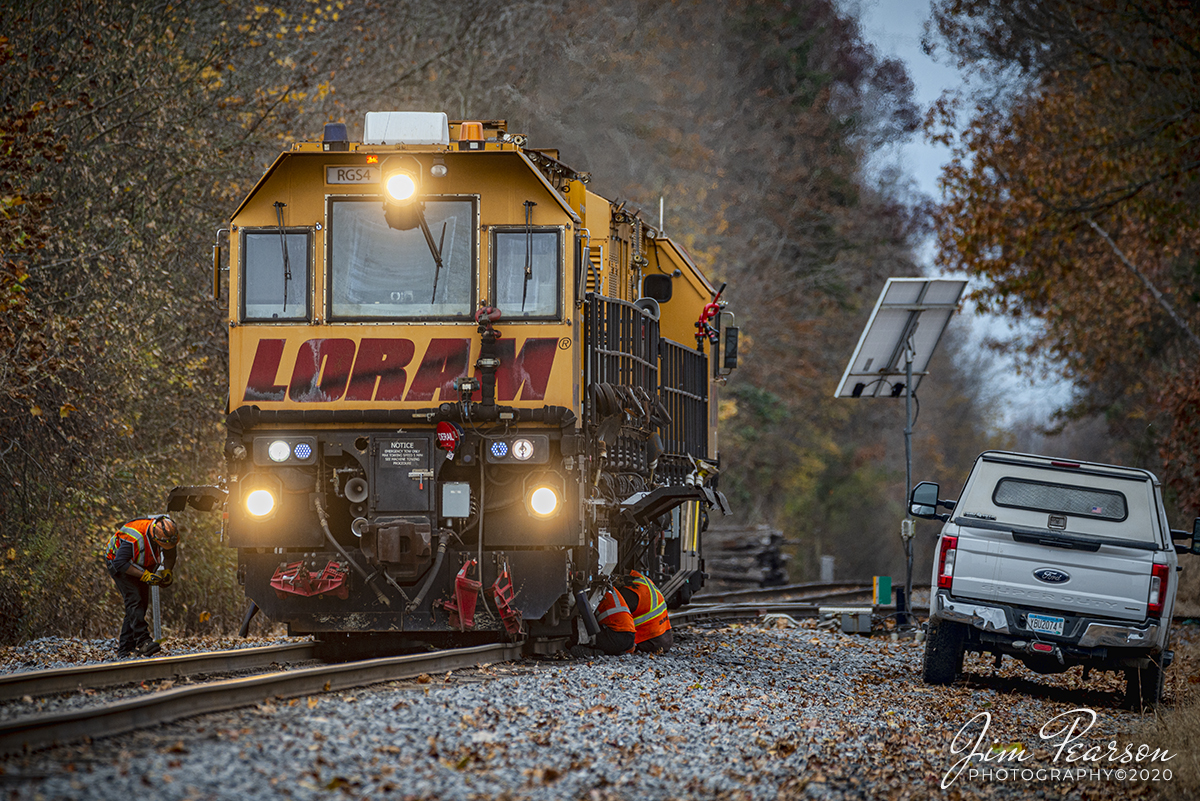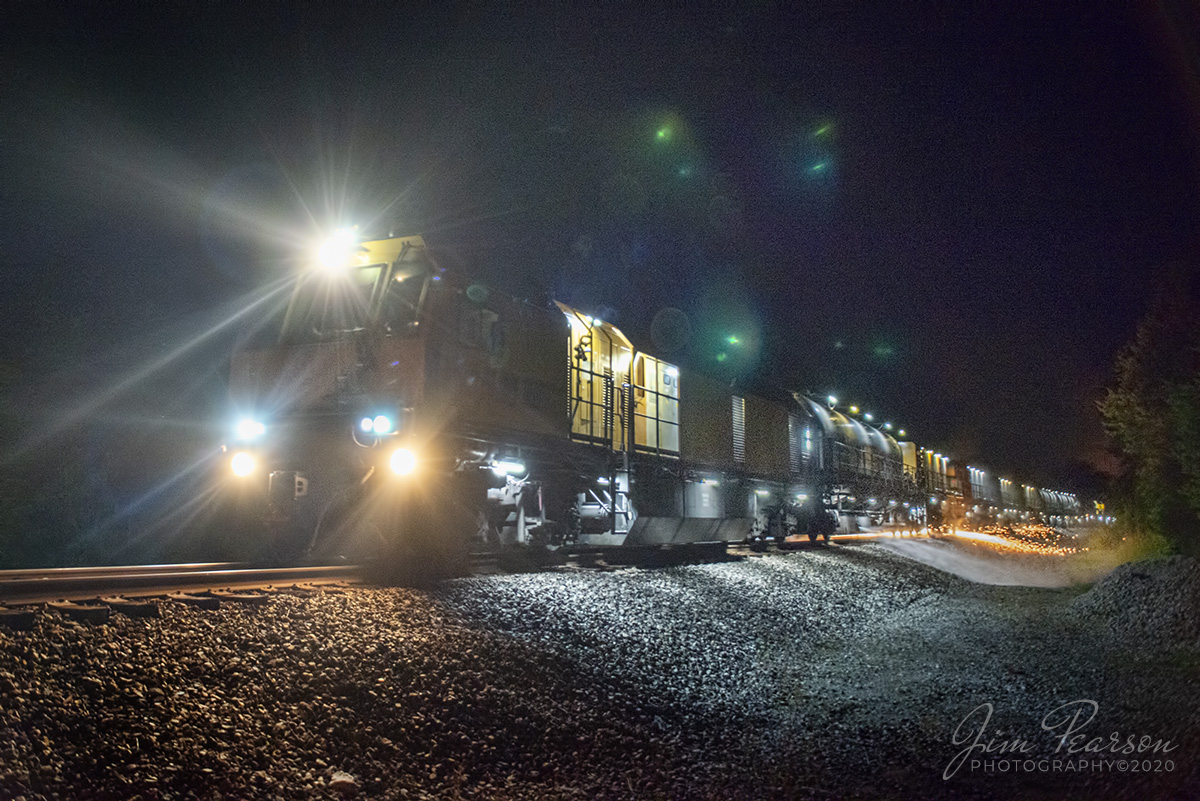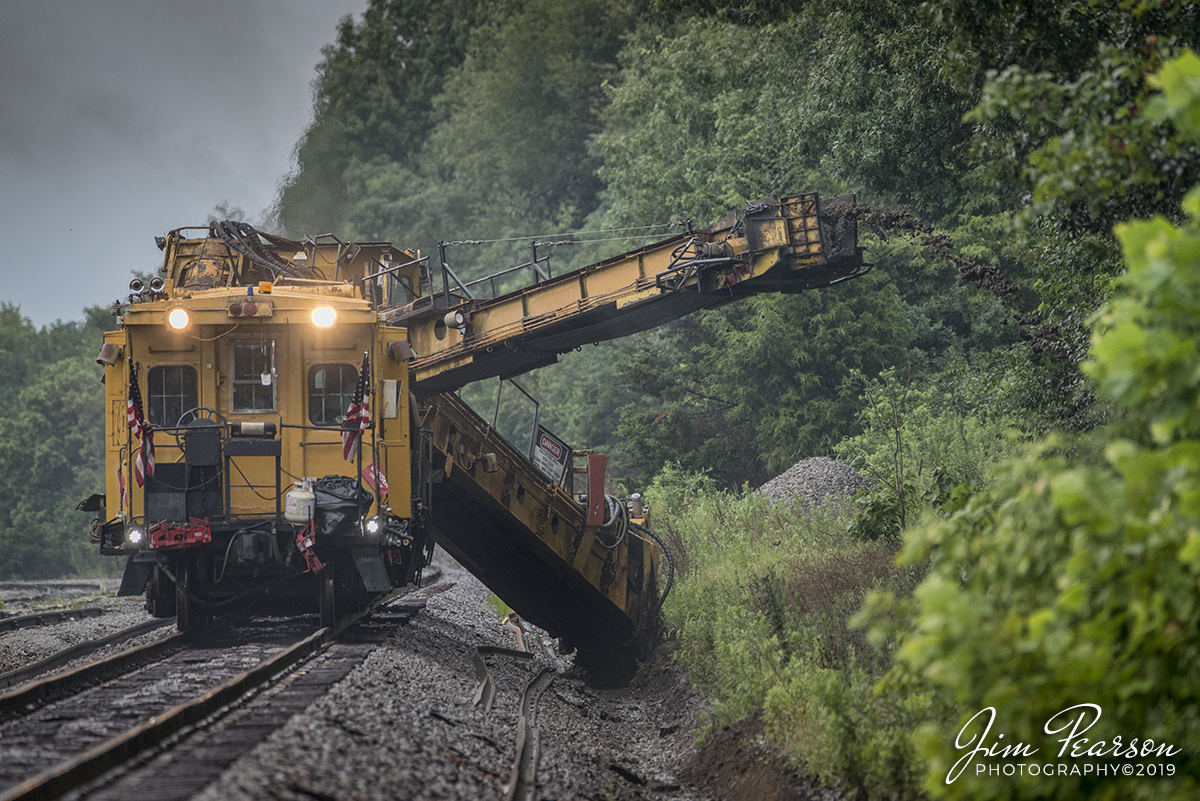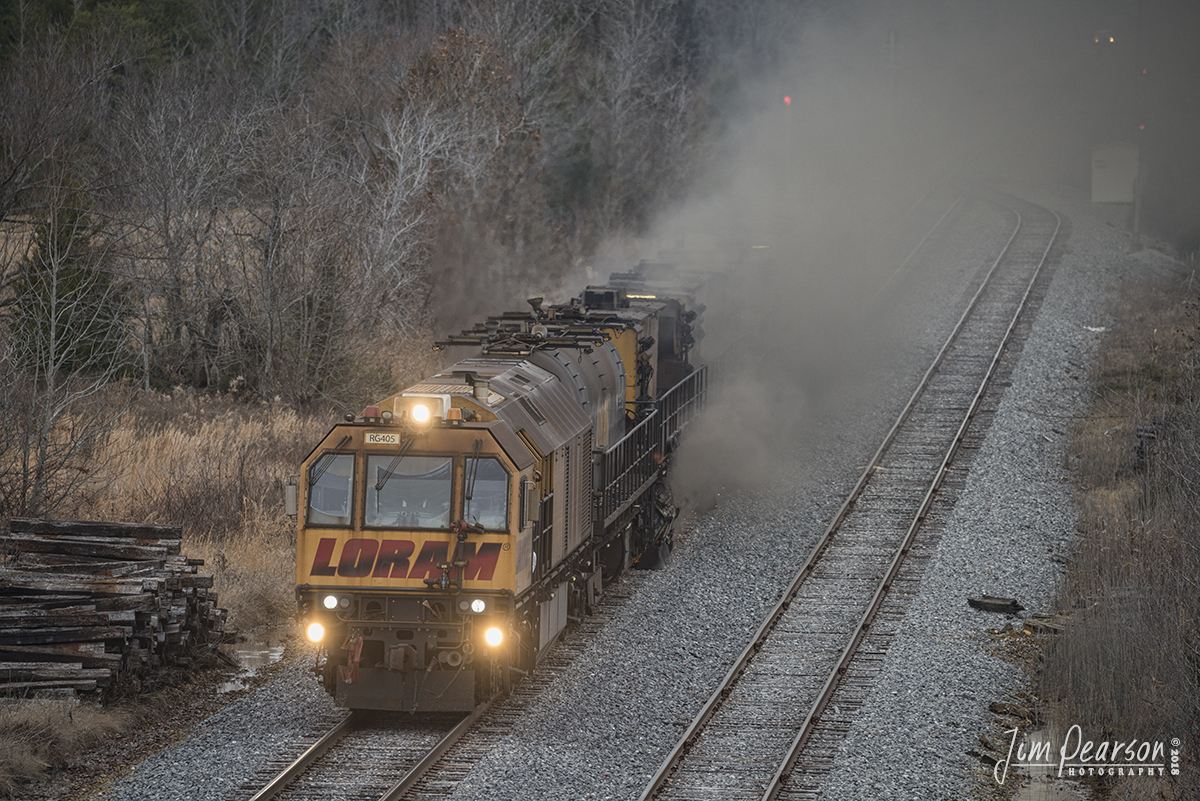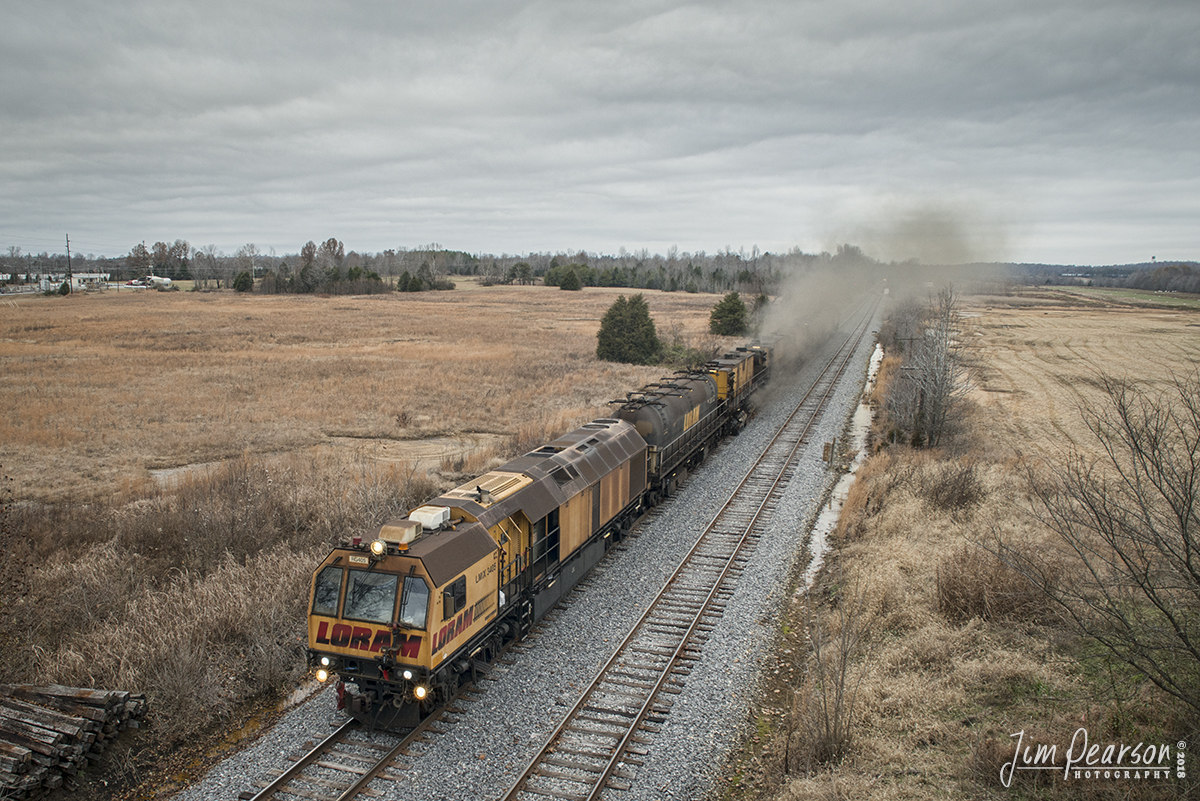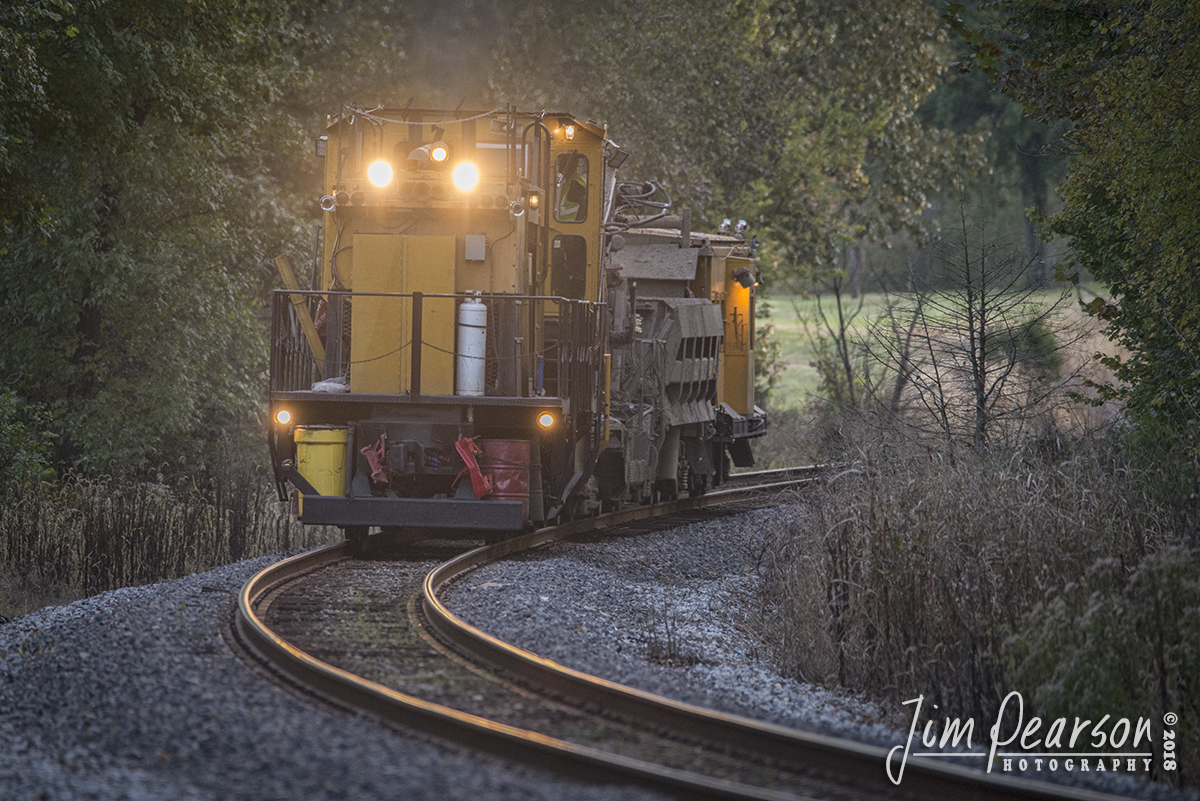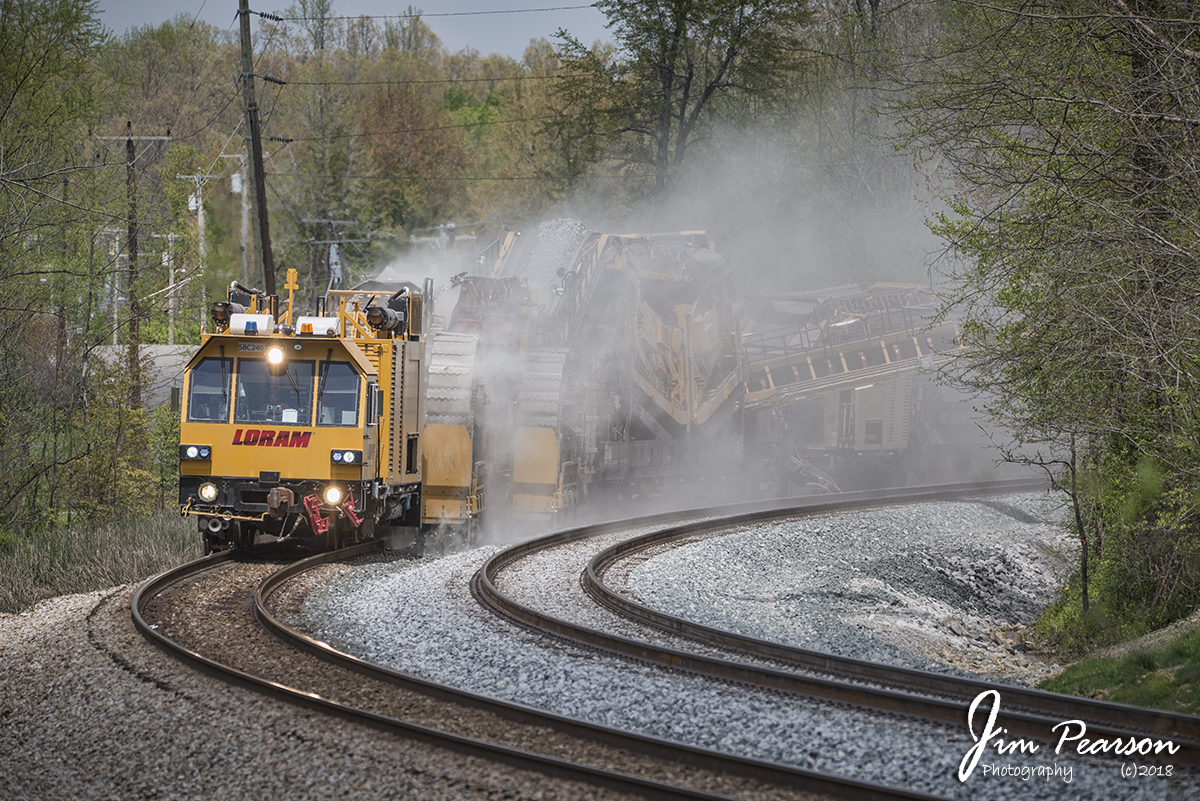
April 27, 2018 – A LoRam Ballast Cleaner fills the air with dust as it rounds a curve at Nortonville, Ky as it heads south on the Henderson Subdivision on track 1.
According to Wikipedia: A ballast cleaner (also known as an undercutter) is a machine that specializes in cleaning the railway track ballast (gravel, blue stone or other aggregate) of impurities.
Over time, ballast becomes worn, and loses its angularity, becoming rounded. This hinders the tessellation of pieces of ballast with one another, and thus reduces its effectiveness. Fine pieces of granite, like sand, are also created by attrition, known simply as “fines”. Combined with water in the ballast, these fines stick together, making the ballast like a lump of concrete. This hinders both track drainage and the flexibility of the ballast to constrain the track as it moves under traffic.
Ballast cleaning removes this worn ballast, screens it and replaces the “dirty” worn ballast with fresh ballast. The advantage of ballast cleaning is that it can be done by an on-track machine without removing the rail and sleepers, and it is therefore cheaper than a total excavation.
A cutter bar runs beneath sleeper level excavating all of the ballast under the sleepers to a specified, variable depth. A conveyor then moves the ballast into the cleaner, where it gets forced through a mesh by a shaking chamber. Pieces of ballast which are smaller than the mesh size fall through and are rejected, those that are bigger than the mesh are returned to the track along with fresh ballast. Some ballast cleaners have both ballast and spoil wagons attached to it, to which the materials are fed by a series of conveyor belts. Others simply undercut the ballast, and allow for a work train to come through to dump fresh ballast. This process can be done in short possessions, meaning that track life can be considerably extended with the minimum of disruption.

